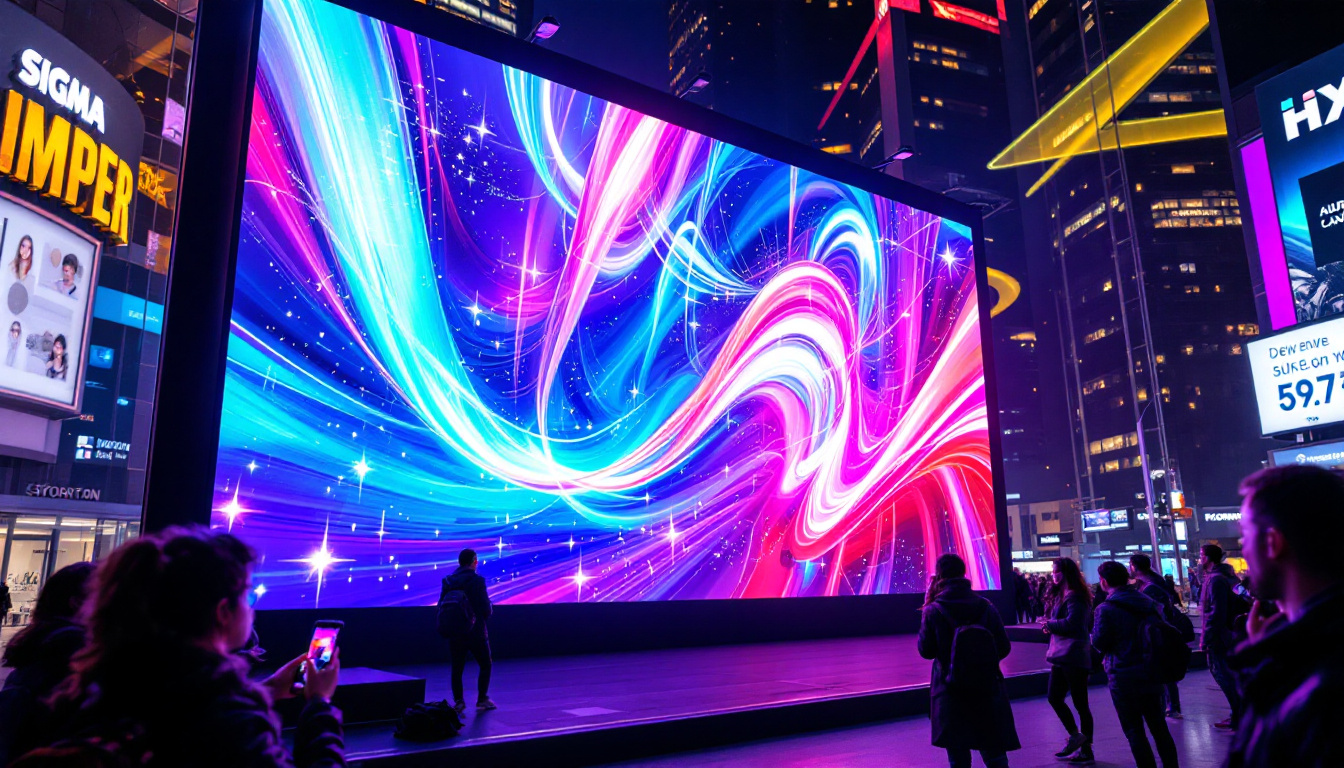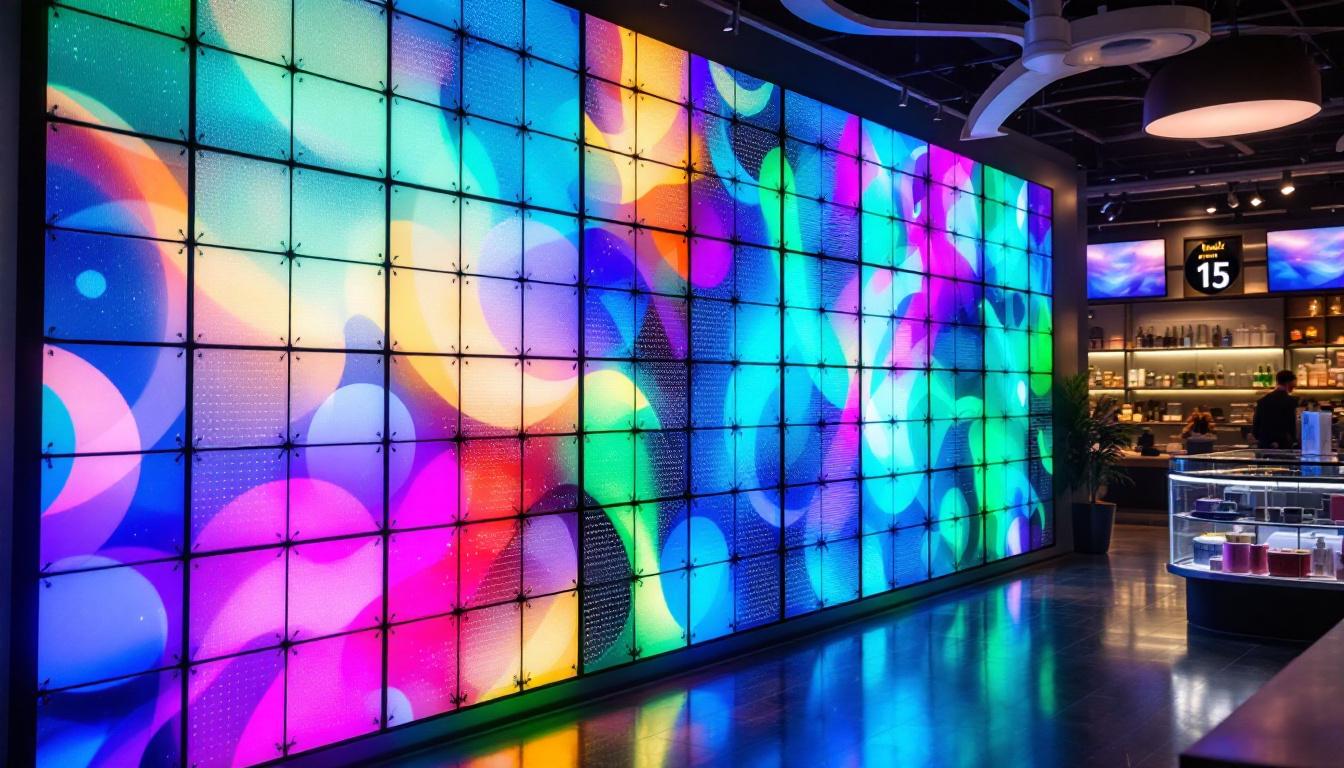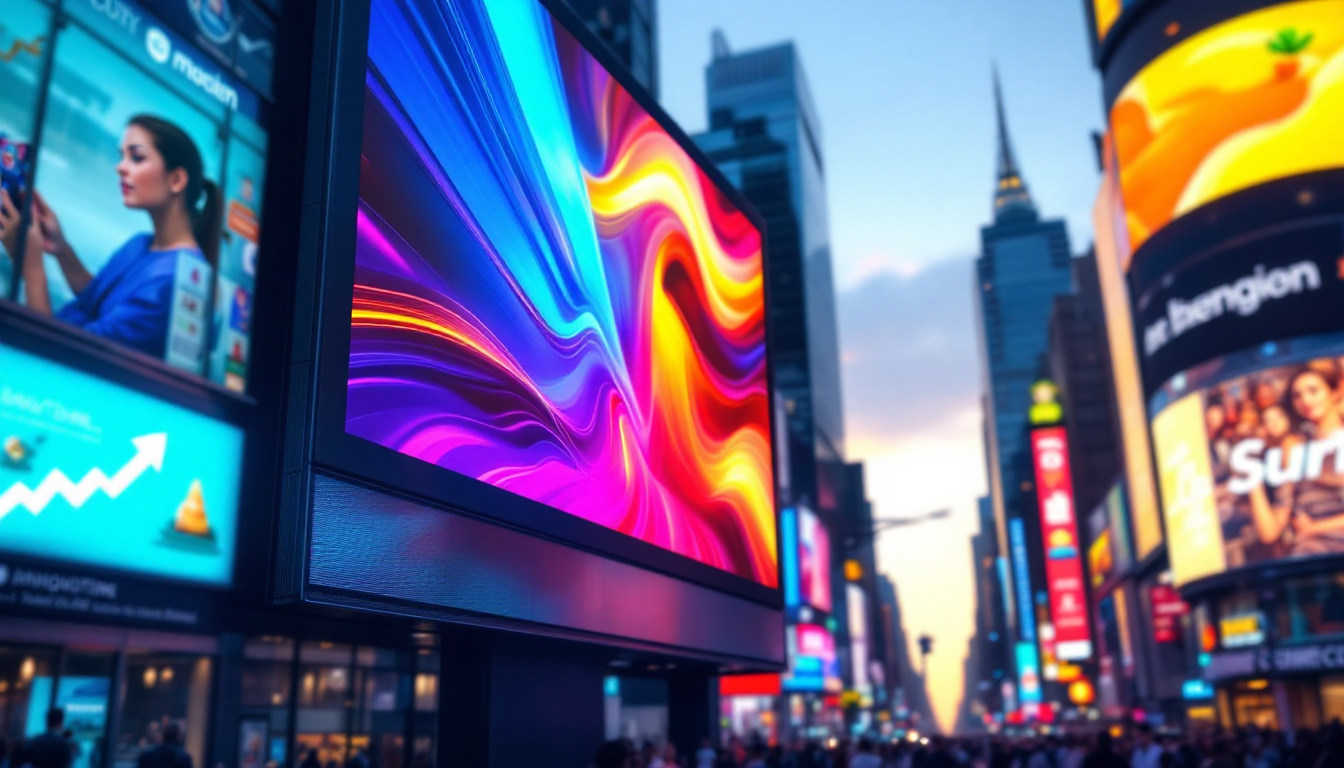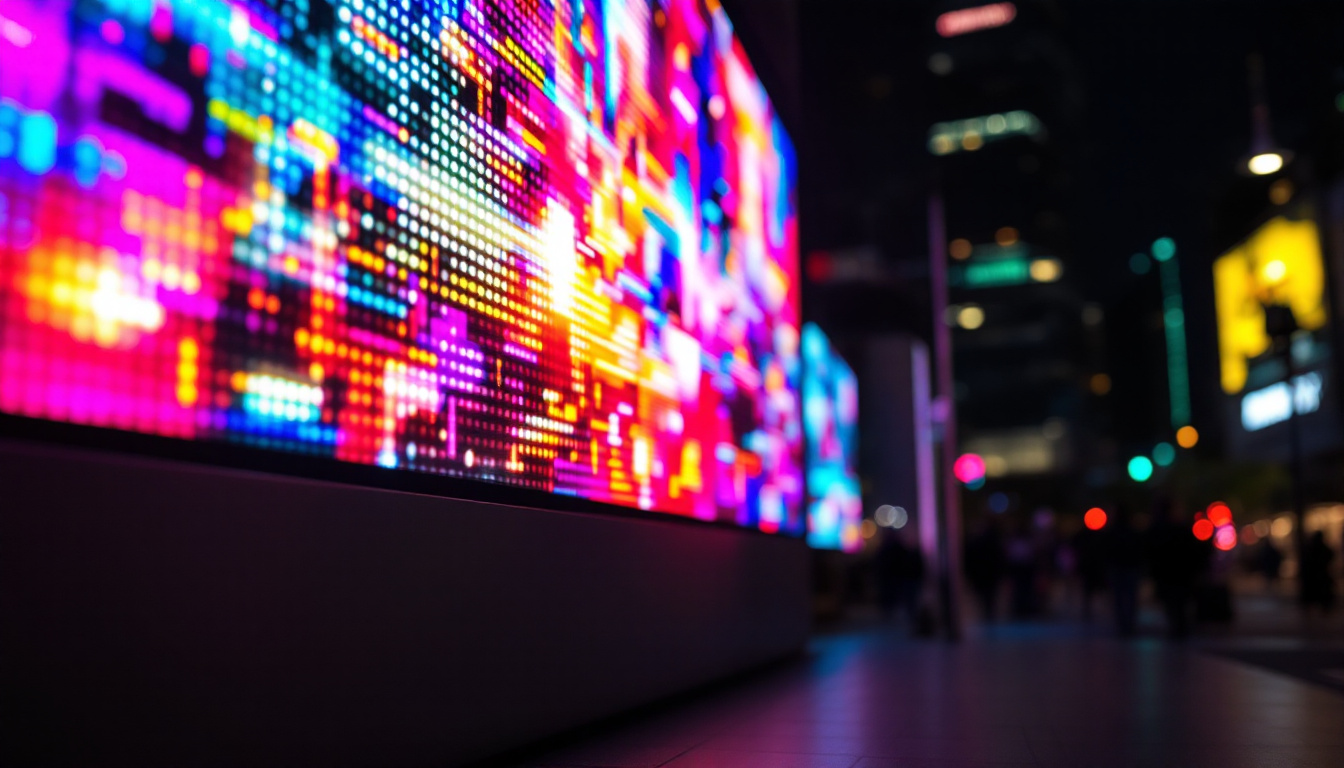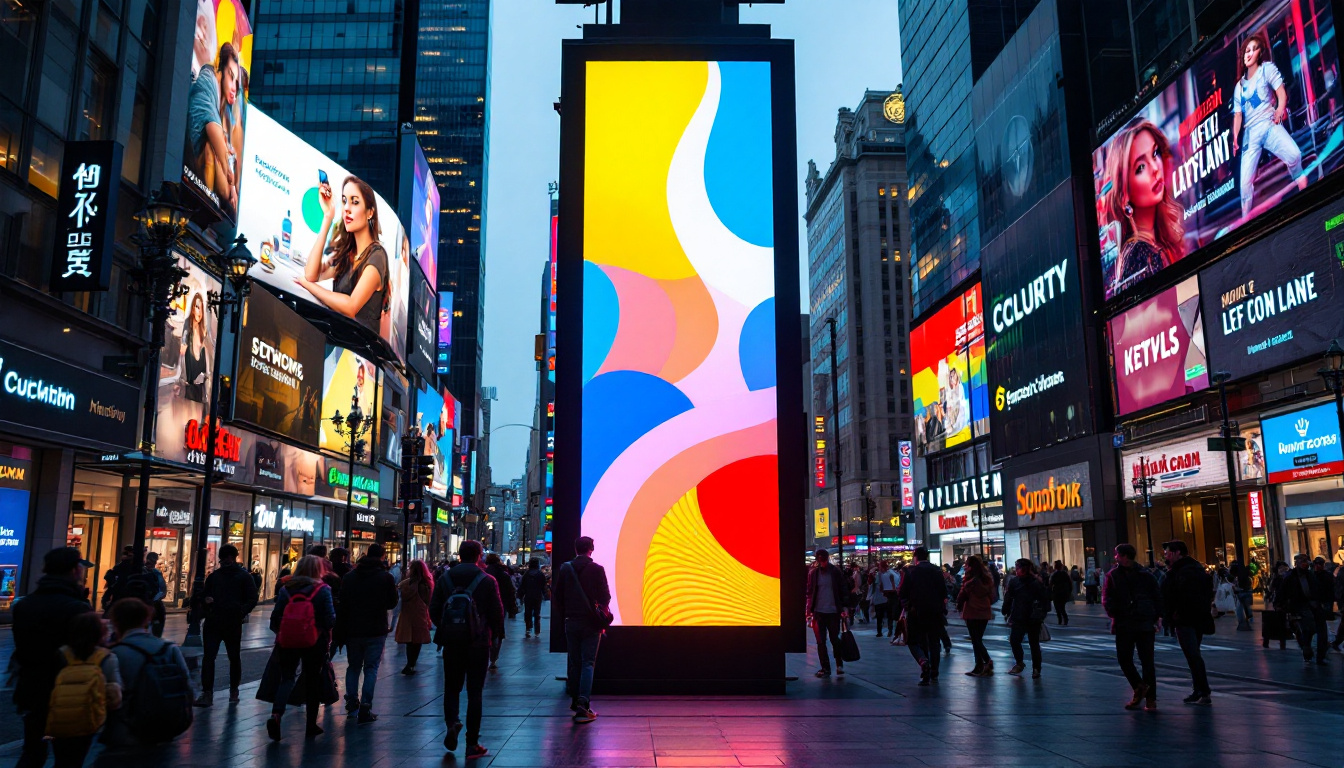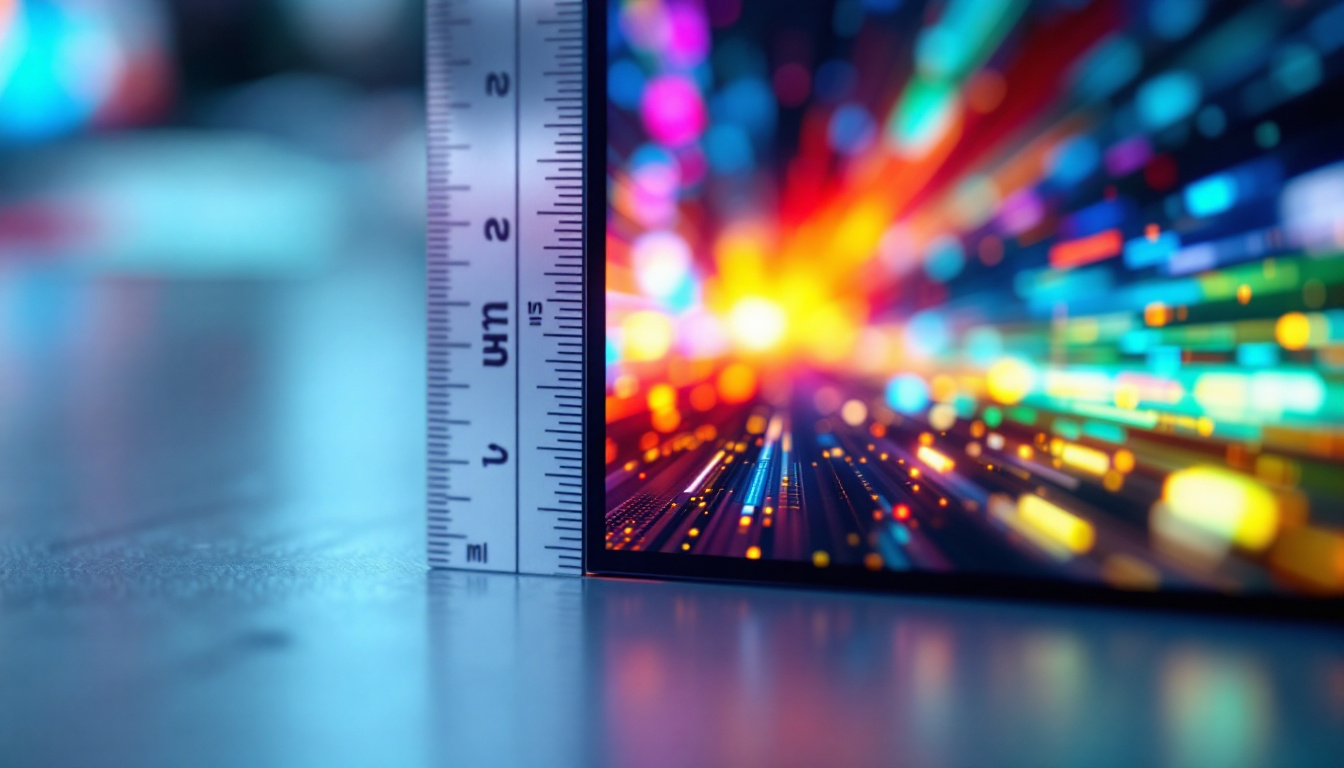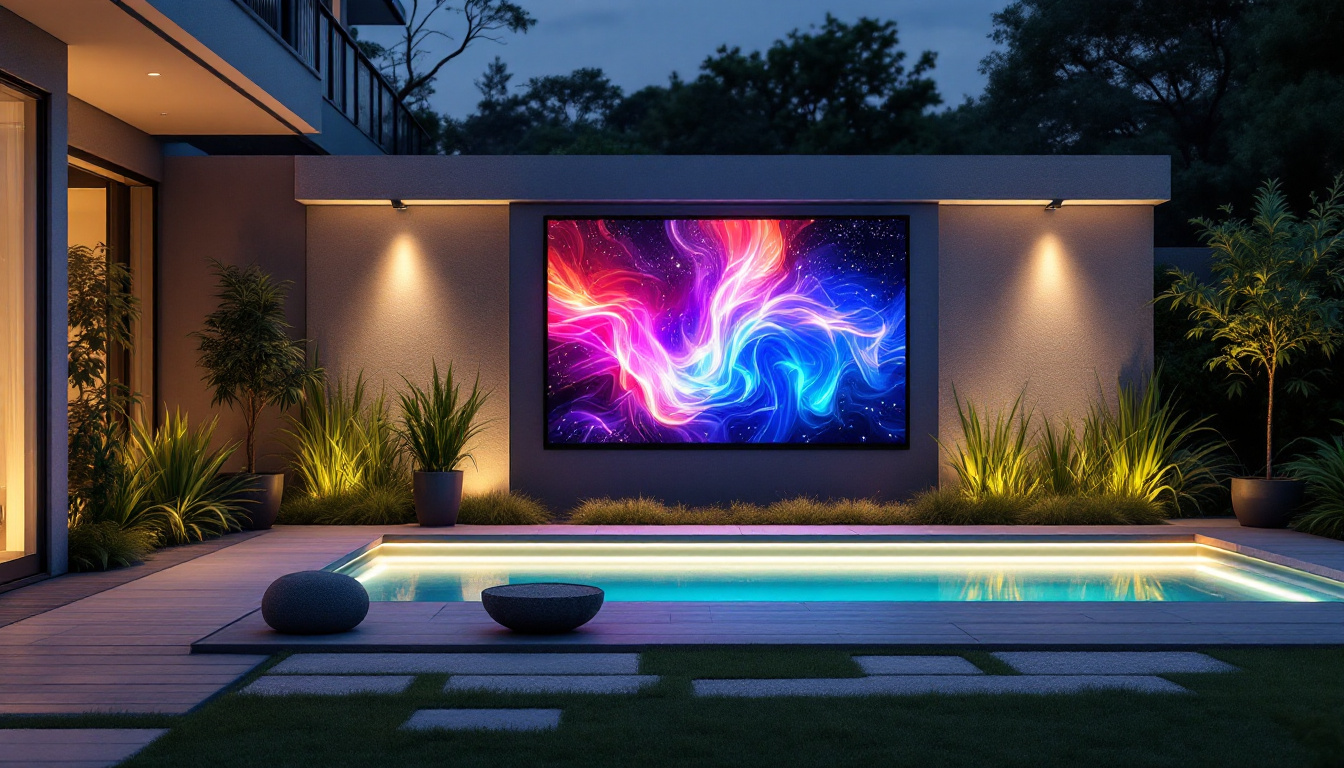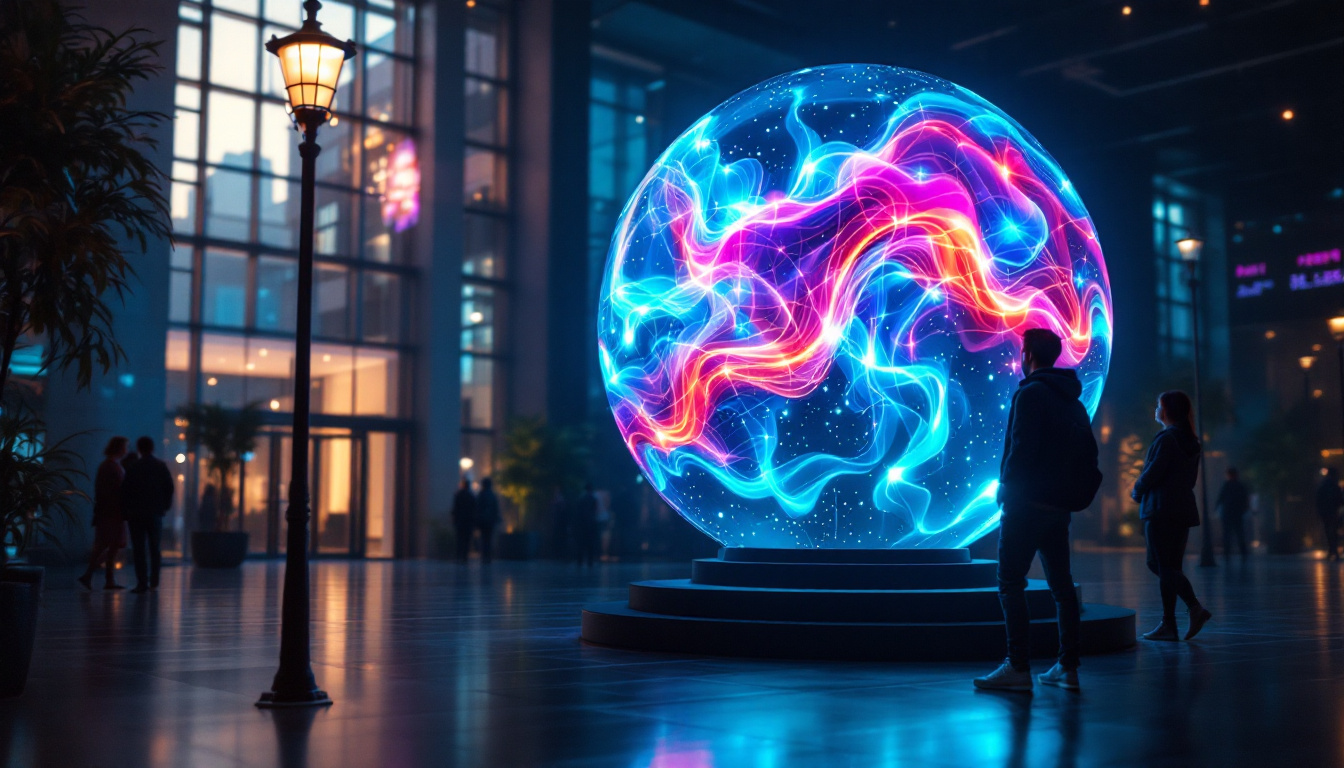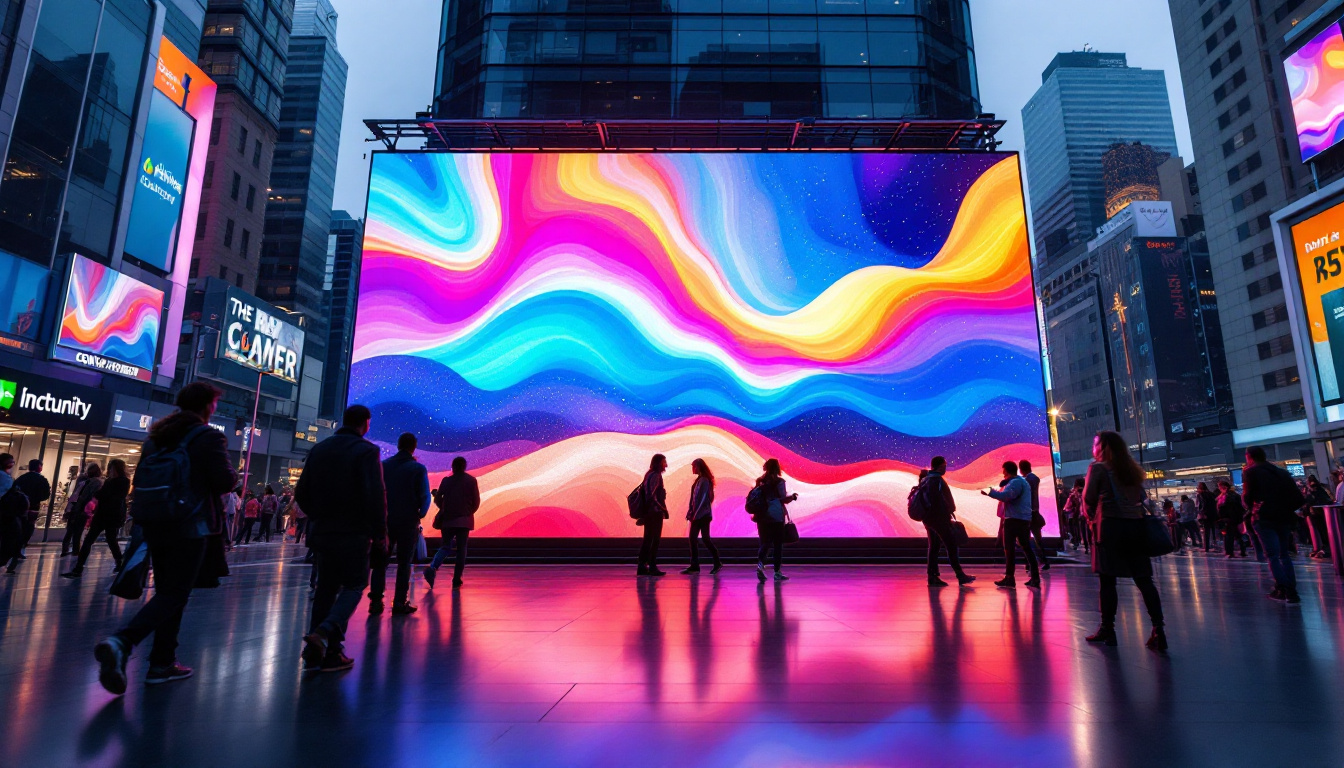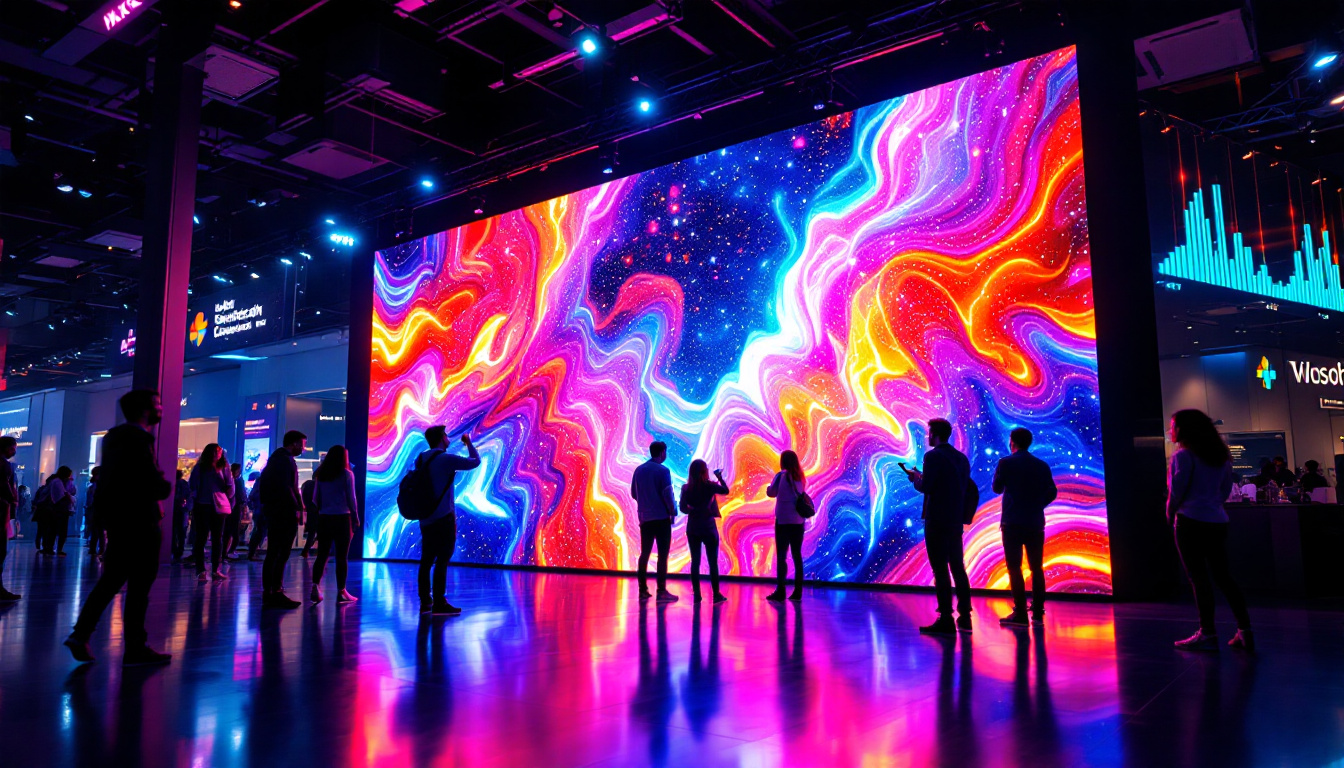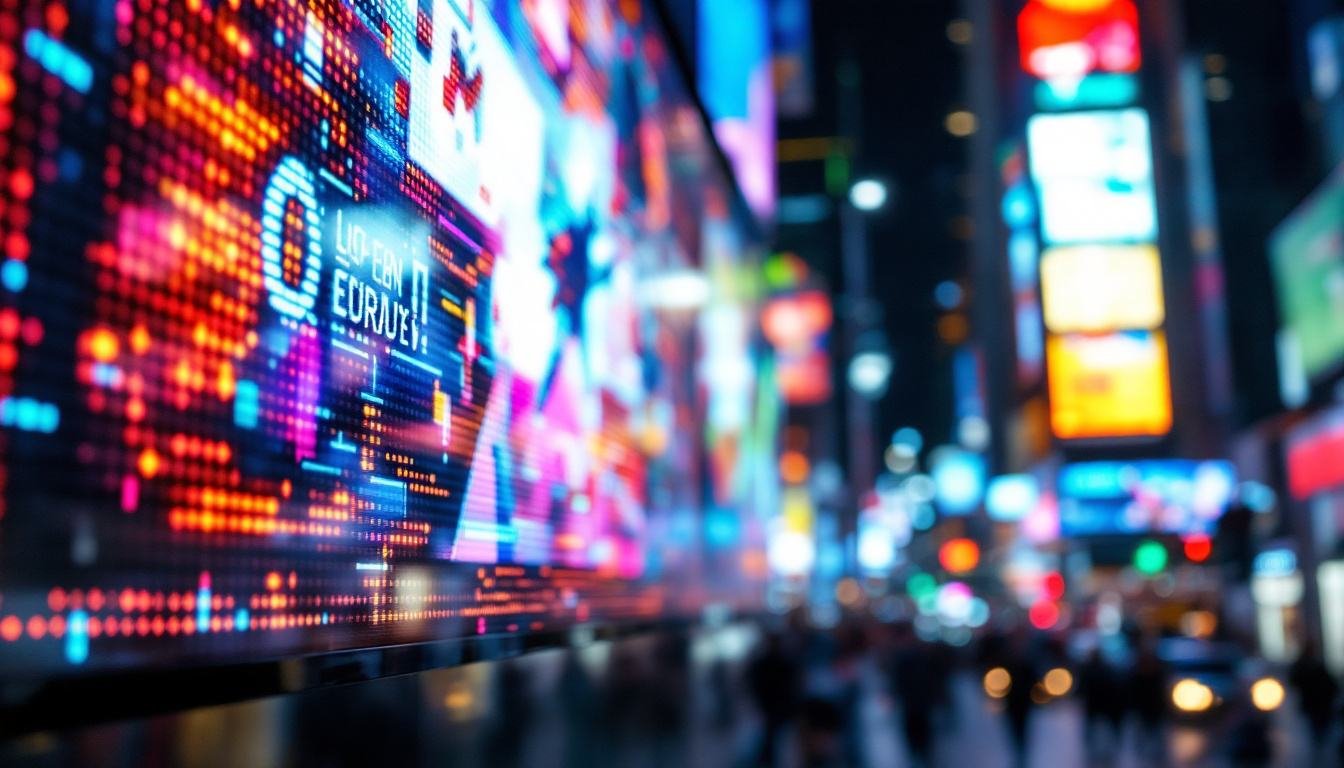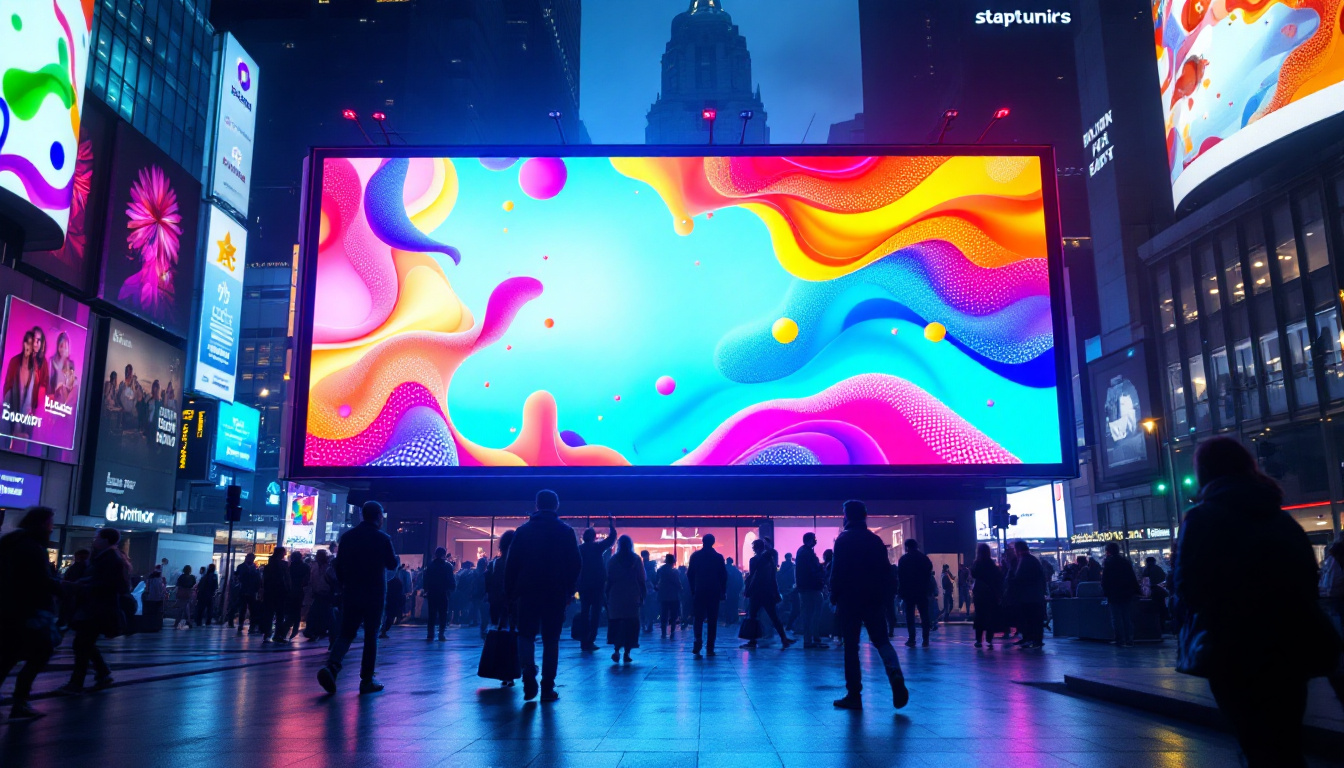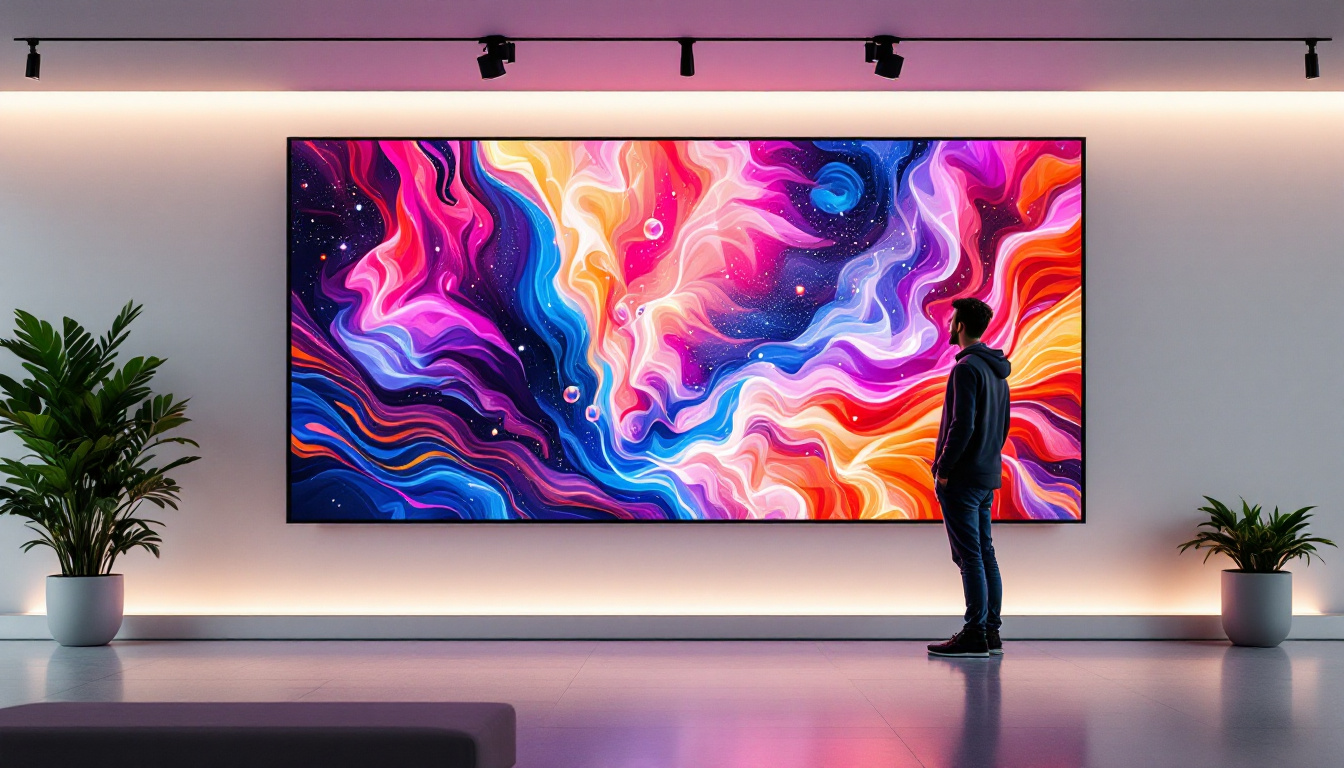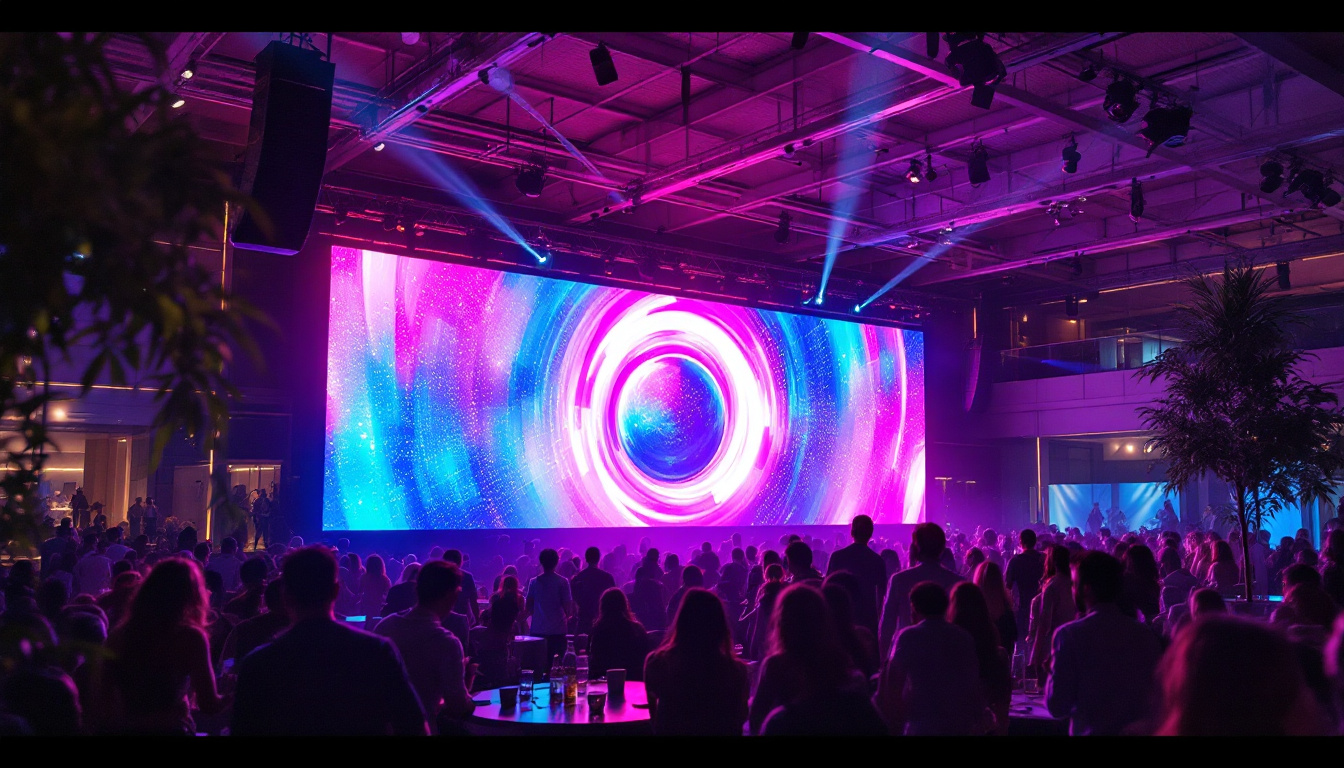In today’s fast-paced business environment, visual communication plays a pivotal role in capturing attention and conveying messages effectively. Among various display technologies, LED displays have emerged as a dominant choice for companies seeking vibrant, reliable, and versatile signage solutions. This article delves into the world of LED displays, explaining their technology, benefits, applications, and considerations for businesses looking to invest in this dynamic medium.
Understanding LED Display Technology
LED stands for Light Emitting Diode, a semiconductor device that emits light when an electric current passes through it. Unlike traditional display technologies such as LCD or plasma, LED displays use an array of these tiny diodes to create images, videos, and text with remarkable brightness and clarity. The efficiency of LED technology not only enhances visual performance but also contributes to energy savings, making it an environmentally friendly option for both commercial and residential use.
How LED Displays Work
At the core of an LED display is a matrix of individual LEDs, each acting as a pixel. These pixels can be red, green, and blue diodes combined to produce a full spectrum of colors through a process called additive color mixing. By adjusting the intensity of each diode, the display can render millions of colors with high precision. This capability allows for vibrant visuals that can captivate audiences, whether in a retail setting, at a concert, or in a corporate presentation.
LED displays are typically categorized into two types: direct view LED and LED-backlit LCD. Direct view LED displays use LEDs as the light source and image creator simultaneously, resulting in superior brightness and contrast. In contrast, LED-backlit LCDs use LEDs only as a backlight behind an LCD panel. The former is particularly popular in large-scale installations, such as sports arenas and outdoor advertising, where visibility in bright sunlight is crucial.
Pixel Pitch and Resolution
One of the critical technical aspects of LED displays is pixel pitch, which refers to the distance between the centers of two adjacent pixels, measured in millimeters. A smaller pixel pitch means higher resolution and sharper images, making it suitable for close viewing distances. For example, a 1.5mm pixel pitch display is ideal for indoor applications where viewers are near, while a 10mm or larger pitch is common for outdoor billboards viewed from afar. This variation in pixel pitch allows designers and engineers to tailor the display’s specifications to the intended environment, ensuring optimal viewing experiences.
Moreover, advancements in technology have led to the development of fine-pitch LED displays, which can achieve pixel pitches as low as 0.9mm. These displays are increasingly being used in high-end applications such as control rooms, broadcast studios, and luxury retail environments, where image fidelity is paramount. The ability to create seamless video walls with minimal bezels further enhances the immersive experience, making LED technology a preferred choice for modern visual communication.
Advantages of LED Displays for Businesses
LED displays offer numerous benefits that make them an attractive option for companies across various industries. Their unique combination of brightness, durability, and flexibility enables businesses to communicate more effectively with their target audiences.
Exceptional Brightness and Visibility
One of the standout features of LED displays is their ability to produce intense brightness levels, often exceeding 5,000 nits for outdoor models. This makes them easily visible even under direct sunlight, a crucial factor for outdoor advertising and public information displays. Indoor LED screens also provide vivid colors and high contrast ratios, enhancing the viewing experience in retail stores, corporate lobbies, and event venues. The high visibility of LED displays not only attracts attention but also ensures that messages are conveyed clearly, even from a distance, making them ideal for high-traffic areas.
Energy Efficiency and Longevity
Compared to traditional lighting and display technologies, LEDs consume significantly less power while delivering superior performance. This energy efficiency translates into lower operating costs and a reduced environmental footprint. Additionally, LED displays boast long lifespans, often rated at 50,000 to 100,000 hours of continuous use, minimizing maintenance and replacement expenses for businesses. This longevity means that companies can invest in LED technology with confidence, knowing that their displays will continue to perform reliably for years, thus maximizing their return on investment.
Customizability and Flexibility
LED displays can be tailored to fit a wide range of sizes and shapes, from small digital signage screens to massive stadium video walls. Modular designs allow companies to scale their displays as needed or create unique curved or irregular shapes to enhance brand presence. Furthermore, LED technology supports dynamic content, enabling real-time updates, animations, and interactive features that engage viewers more effectively than static signs. This adaptability not only allows businesses to showcase promotional content that aligns with current trends but also facilitates the integration of social media feeds, live updates, and other interactive elements that can significantly boost audience engagement.
Moreover, the ability to program and schedule content remotely means that businesses can easily adjust their messaging based on time of day, season, or specific events. This level of control allows for targeted marketing strategies that can resonate more deeply with diverse audience segments. For instance, a retail store can display different promotions during peak shopping hours compared to quieter times, maximizing foot traffic and sales opportunities. The versatility of LED displays thus empowers businesses to be agile and responsive in their marketing efforts, ensuring they remain competitive in a fast-paced market.
Common Applications of LED Displays in Business
LED displays have transformed the way companies communicate, advertise, and interact with customers. Their versatility makes them suitable for various applications across multiple sectors.
Outdoor Advertising and Billboards
One of the most visible uses of LED displays is in outdoor advertising. Digital billboards equipped with LED panels offer advertisers the ability to rotate multiple ads, schedule content based on time or audience demographics, and deliver eye-catching visuals that outperform traditional print billboards. According to recent market research, the global digital out-of-home advertising market is expected to grow at a compound annual growth rate (CAGR) of over 10% through 2027, driven largely by LED technology advancements.
Retail and Point-of-Sale Displays
Retailers leverage LED displays to attract customers, promote products, and create immersive shopping experiences. From window displays that showcase dynamic promotions to in-store video walls that enhance brand storytelling, LED screens help retailers stand out in competitive markets. Interactive LED kiosks also enable personalized customer engagement, increasing conversion rates and customer satisfaction.
Corporate Communications and Events
In corporate settings, LED displays are widely used for presentations, video conferencing, and branding during events and conferences. Large LED video walls provide clear visibility for audiences, while smaller LED panels can be integrated into meeting rooms for seamless communication. The flexibility of LED displays allows companies to adapt their messaging quickly and professionally.
Transportation and Public Information
Airports, train stations, and bus terminals utilize LED displays to provide real-time information, such as arrival and departure times, gate changes, and emergency alerts. The high visibility and reliability of LED technology ensure that passengers receive timely and accurate updates, improving overall travel experience and safety.
Key Considerations When Choosing an LED Display
Investing in an LED display requires careful evaluation of several factors to ensure the solution aligns with business goals and operational needs.
Viewing Distance and Environment
Understanding the typical viewing distance is essential to selecting the appropriate pixel pitch and resolution. Indoor environments with close viewing require finer pixel pitches for crisp images, while outdoor displays designed for distant viewing can use larger pixel pitches. Additionally, environmental factors such as weather exposure, ambient light levels, and potential vandalism must be considered to choose displays with suitable IP ratings and protective features.
Content Management and Software Integration
Modern LED displays rely on sophisticated content management systems (CMS) that allow businesses to schedule, update, and customize content remotely. Choosing a display with user-friendly software and compatibility with existing digital infrastructure can streamline operations and maximize the impact of visual communications.
Budget and Total Cost of Ownership
While LED displays may involve higher upfront costs compared to traditional signage, their durability, energy efficiency, and dynamic capabilities often result in lower total cost of ownership over time. It is important to factor in installation, maintenance, software licensing, and potential upgrades when budgeting for an LED display project.
The Future of LED Display Technology
LED technology continues to evolve rapidly, driven by innovations that enhance performance, reduce costs, and expand application possibilities.
MicroLED and MiniLED Advances
Emerging technologies such as MicroLED and MiniLED offer even higher resolution, improved color accuracy, and better energy efficiency. MicroLED displays consist of microscopic LEDs that deliver stunning image quality rivaling OLED screens, without the drawbacks of burn-in or limited lifespan. These advancements are expected to open new markets for LED displays in consumer electronics, automotive dashboards, and wearable devices.
Integration with Smart Technologies
The integration of LED displays with Internet of Things (IoT) devices and artificial intelligence (AI) is transforming how businesses interact with their audiences. Smart LED displays can adapt content based on environmental cues, audience demographics, or real-time data analytics, creating personalized and context-aware experiences. For example, retail stores can use AI-powered LED signage to display targeted promotions based on customer behavior.
Sustainability and Eco-Friendly Innovations
As sustainability becomes a priority, manufacturers are developing LED displays with recyclable materials, lower power consumption, and improved thermal management. These eco-friendly innovations help companies reduce their carbon footprint while maintaining high-quality visual communications.
Conclusion
LED displays have revolutionized the way companies present information, advertise products, and engage with customers. Their exceptional brightness, energy efficiency, and versatility make them an invaluable asset for businesses seeking to enhance their visual communication strategies. By understanding the technology, benefits, and practical considerations, companies can make informed decisions that maximize the impact of their LED display investments.
As LED technology continues to advance, the opportunities for innovative and immersive visual experiences will only grow, making it an exciting time for businesses to explore the potential of LED displays in their operations.
Discover LumenMatrix’s Innovative LED Solutions
Ready to elevate your company’s visual impact? LumenMatrix is at the forefront of LED display technology, offering a comprehensive range of solutions tailored to your unique needs. From Indoor and Outdoor LED Wall Displays to specialized options like Vehicle, Sports, and Floor LED Displays, our products are designed to captivate and engage your audience. Embrace the future of visual communication with our Custom, All-in-One, and Transparent LED Displays. Check out LumenMatrix LED Display Solutions today and transform your business’s approach to digital signage and branding.



